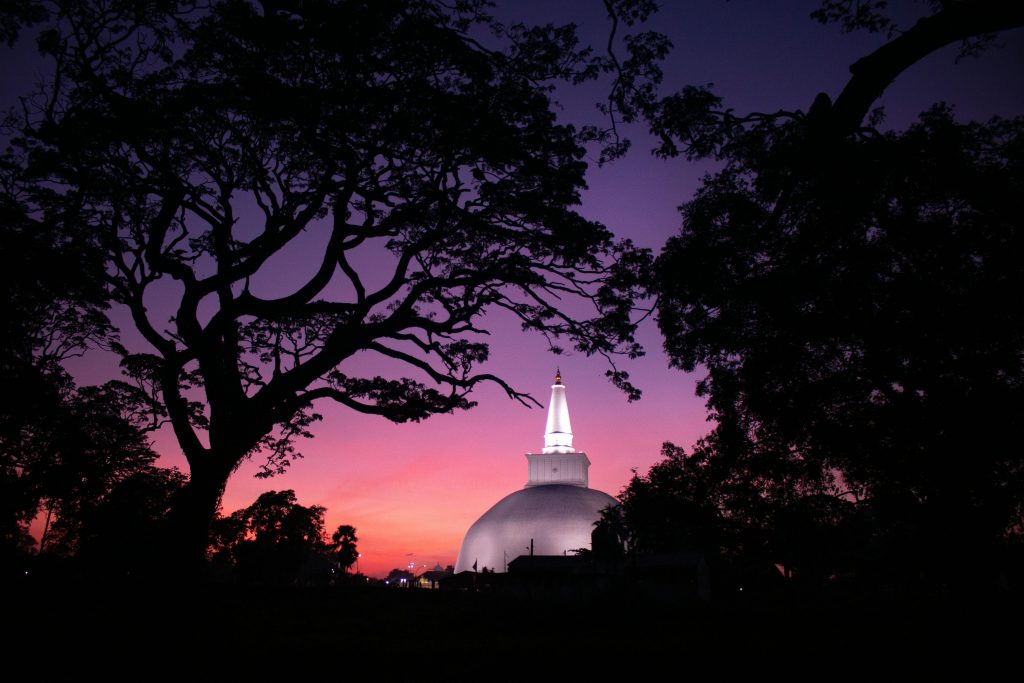Anuradhapura, located in the North Central Province of Sri Lanka, is a city steeped in history and spirituality, renowned as one of the oldest continuously inhabited cities in the world. As the ancient capital of Sri Lanka, Anuradhapura served as the political and religious center of the island for over a millennium, leaving behind a wealth of archaeological treasures and sacred sites that attract visitors from far and wide.
Here’s a glimpse into the rich history and captivating tourist attractions of Anuradhapura:
Sacred Bodhi Tree:
One of the most revered sites in Anuradhapura is the Sri Maha Bodhi, a sacred fig tree believed to have been grown from a cutting of the original Bodhi Tree in India under which Lord Buddha attained enlightenment. The Sri Maha Bodhi is the oldest historically authenticated tree in the world and is surrounded by a serene complex of temples, shrine, and ancient ruins.
Ancient Ruins:
Anuradhapura is home to an extensive array of ancient ruins, including magnificent dagobas (stupas), monastic complexes, palace, and intricately carved stone monuments. Among the most notable are the Jetavanaramaya, the largest brick-built stupa in the world; the Ruwanwelisaya, a towering white dagoba revered for its architectural grandeur and the Abhayagiri Monastery, a vast complex of monastic ruins adorned with intricate stone carvings.
Isurumuniya Temple:
Situated near the Tissa Wewa reservoir, Isurumuniya Temple is renowned for its rock carvings, including the famous “Isurumuniya Lovers” sculpture depicting a couple in a tender embrace. The temple complex also features ancient frescoes, serene meditation chambers, and tranquil ponds, making it a peaceful retreat for spiritual contemplation.
Mihintale:
Located a short distance from Anuradhapura, Mihintale is regarded as the birthplace of Buddhism in Sri Lanka, where the Indian monk Mahinda Thera is said to have introduced the teachings of Buddha to King Devanampiya Tissa in the 3rd century BCE. Visitors can climb the sacred hill of Mihintale to explore a series of ancient monastic caves, stupas, and meditation platforms, while enjoying panoramic views of the surrounding countryside.
Archaeological Museum:
For those interested in delving deeper into Anuradhapura’s rich history, the Archaeological Museum offers a fascinating collection of artifacts, sculptures, and relics dating back to the city’s ancient origins. The museum provides insight into the cultural heritage and artistic achievements of the Anuradhapura civilization, allowing visitors to better appreciate the significance of the city’s archaeological sites.
Cultural Festivals:
Throughout the year, Anuradhapura hosts a variety of cultural festivals and religious ceremonies that offer a glimpse into traditional Sri Lankan customs and rituals. The most significant of these is the annual Poson Poya festival, commemorating the introduction of Buddhism to Sri Lanka, during which thousands of pilgrims flock to Anuradhapura to pay homage to sacred sites and participate in religious observances.
Twin Tanks:
Anuradhapura is also renowned for its ancient irrigation systems, including the Twin Tanks of Tissa Wewa and Nuwara Wewa, which were constructed over two millennia ago to provide water for agriculture and domestic use. These vast reservoirs are marvels of ancient engineering and continue to play a vital role in sustaining the region’s agricultural livelihoods.
Overall, Anuradhapura offers a captivating blend of history, spirituality and natural beauty that invites visitors to explore its ancient wonders and immerse themselves in the cultural heritage of Sri Lanka. From majestic stupas and sacred relics to serene temples and lush landscapes, Anuradhapura is a treasure trove of archaeological marvels waiting to be discovered.

